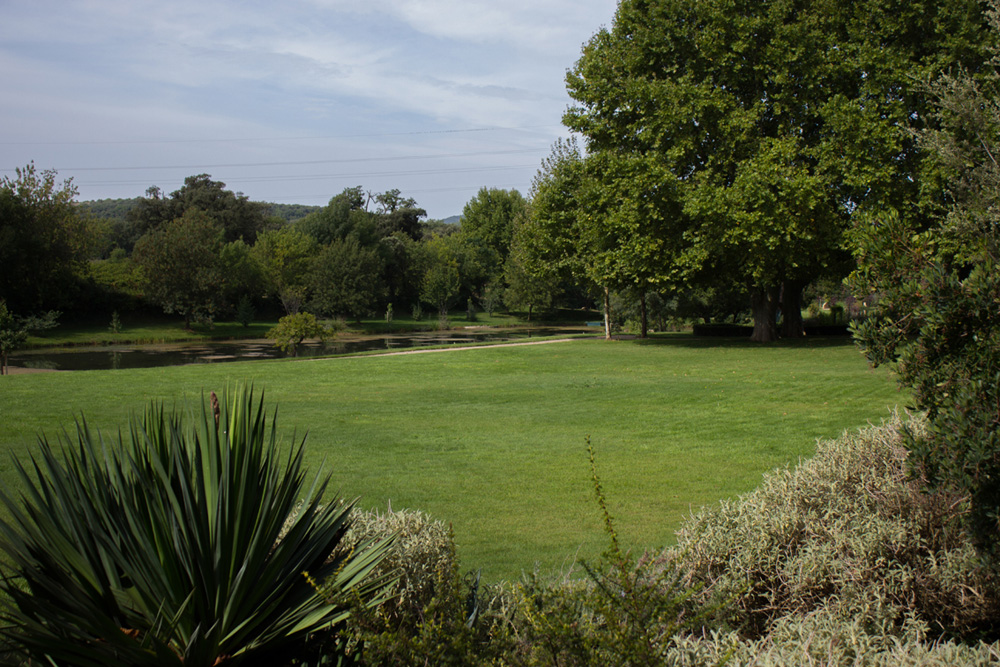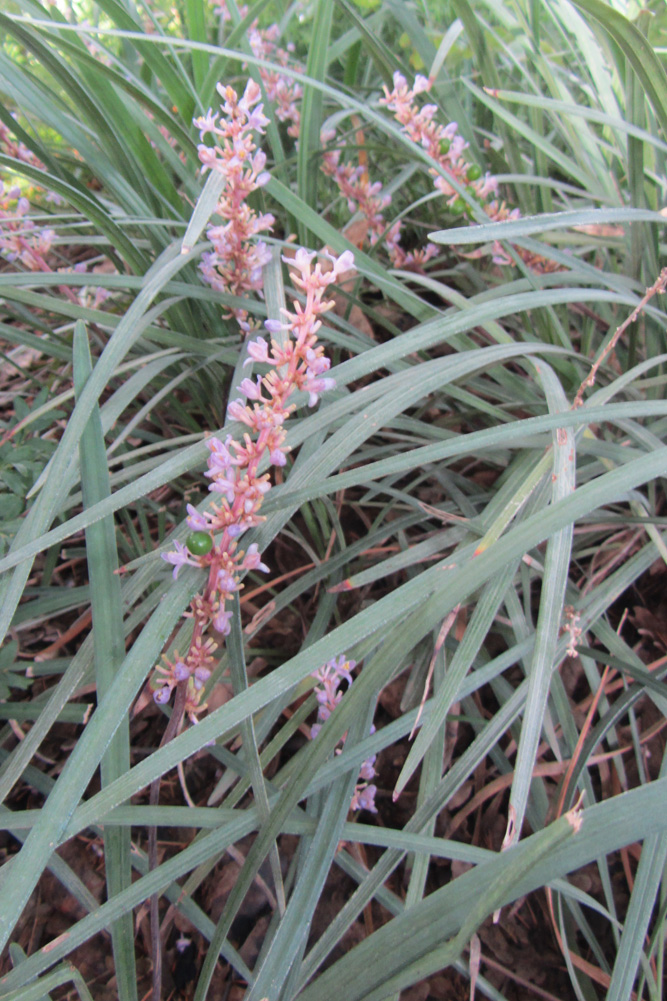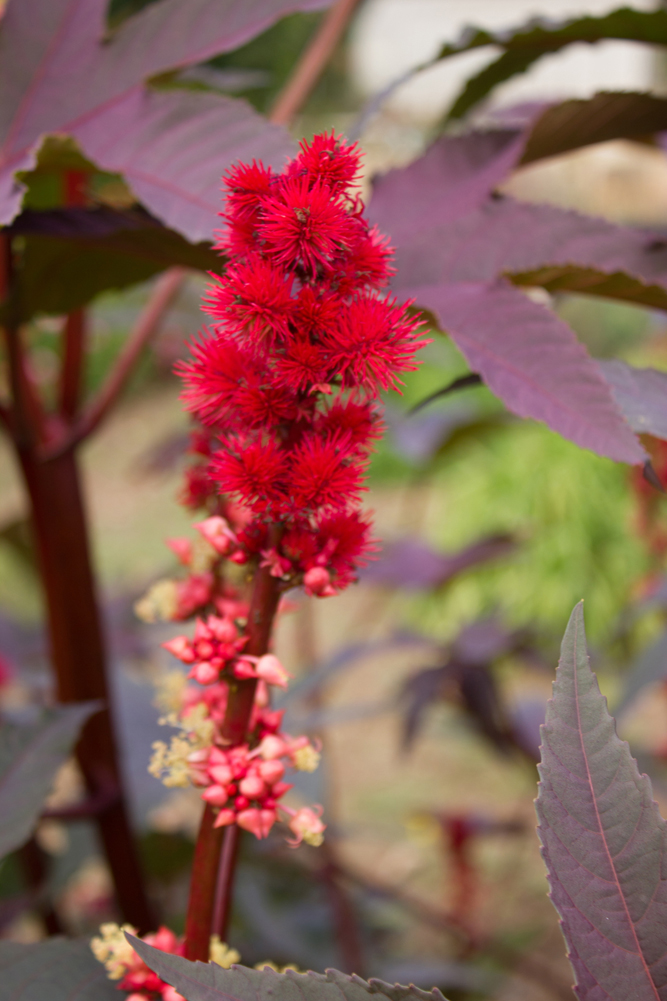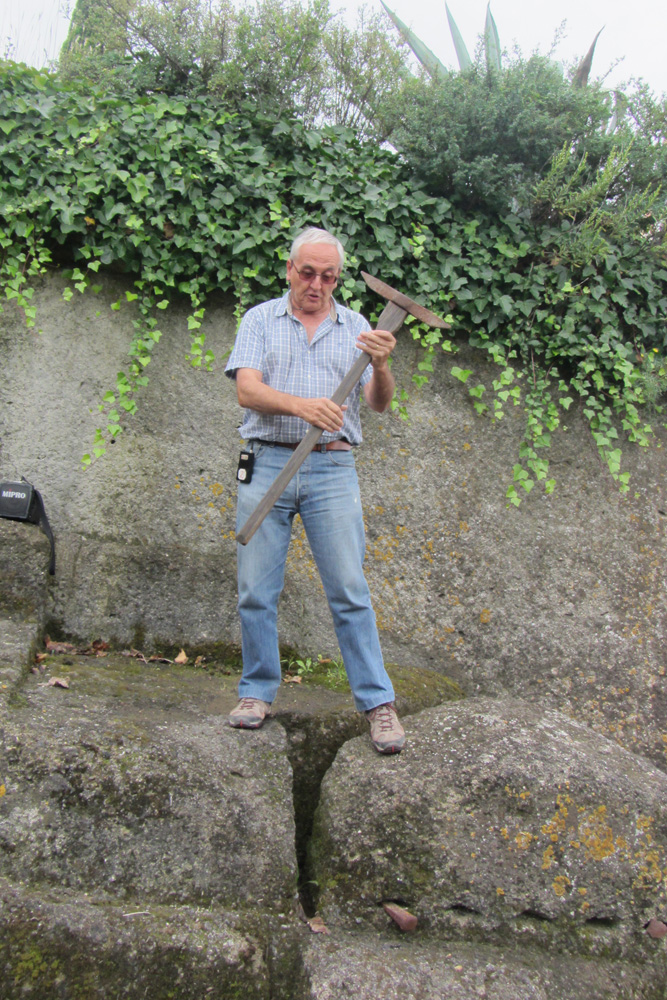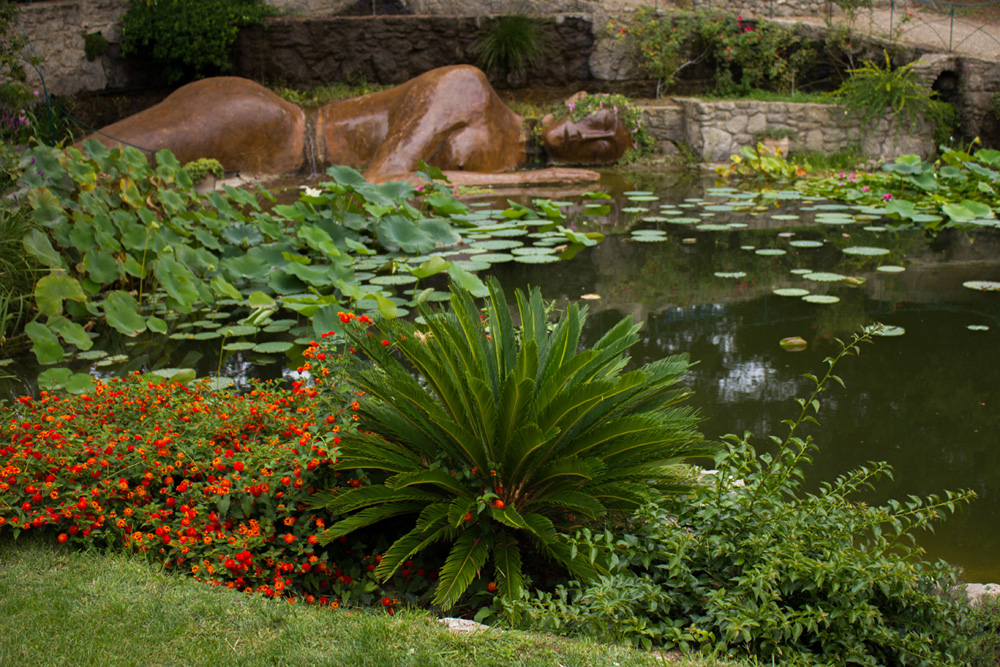September / septembre 2015
Visit to the Domaine de la Dourbie and the Jardin de St. Adrien, Hérault
Click on an image to enlarge it / Cliquez sur une image pour l’agrandir
Domaine de la Dourbie
Domaine de la Dourbie is blessed with two rivers flowing through the property, the Hérault and the Dourbie, the small river after which the domaine is named. Wine has been produced on the property since 1781 and in 2003 the current owner started a programme of major renovations. He began with the wine-making facilities and the visit included a tasting of their wines, which are cultivated organically. In 2006 work started on the gardens, which were redesigned by Dominique Lafourcade.
In 2014 their achievement was officially recognised when the garden was designated a ‘jardin remarquable’. The brief was to create a large family garden, both productive and ornamental, which is faithful to the style of the gardens of the mas viticoles in the mid Hérault valley. There are formal areas around the house and swimming pool, but a large area of the garden is devoted to fruit and vegetable production, combined with decorative planting.
Progressing to the outer areas, the garden becomes more naturalistic with a stream, lake and woodlands merging seamlessly into the surrounding countryside. An ancestor of the current owner diverted the course of the Dourbie River; a task involving substantial engineering works, including channelling
300 meters underground.Remnants of the original course are visible as a shallow depression in which there is a now a small lake. This appears part of the natural landscape but is in fact a recent addition, a feature of Lafourcade’s redesign which has made use of the existing mature trees.
There is also a ‘dry’ border – a modern planting of drought-resistant shrubs and on the northern edge of the garden is an established woodland area providing welcome shade in the height of summer.
Liriope muscari, a useful late-flowering plant for dry shade, was looking good in the woodland area and we admired Ricinus communis, a striking feature of the potager.
The visit to La Dourbie culminated in a delicious ‘pique-nique gourmand avec produits de terroir’ and the wine of the domain.
Le Jardin de St Adrien
The garden of St Adrien is also classified as a ‘jardin remarquable’. It is an individualistic garden created in an abandoned quarry, the vision of a couple, Françoise and Daniel Malgouyre and their family. The hard, impermeable rock was first exploited by the Romans when the stone was used for bread ovens.
The quarry was worked extensively during the Middle Ages and remained open until the 1870s, after which it lay abandoned and neglected. Daniel knew of the quarry as a child and it captured his imagination. When it came on the market he was able to buy it and realise his dream to create a garden.
In order to quarry the stone, vertical grooves were cut the width of a man’s foot and wedges then used to make the horizontal break. A man could extract approximately one cubic metre a day. The stone was used in many buildings locally including a nearby chapel dated 1080. The garden makes use of the landscape formedby the quarry to create
large pools stocked with fish. Daniel regards one of the highlights of the garden to be the statue, Fontaine de Philia, crowned by flowers, different each year. An open-air theatre has been created in one area, hosting well attended concerts and spectacles during the summer months.
Impressions of the day
We saw two gardens very different in style and possibly appealing to different tastes. Both are family enterprises demonstrating what passion and dedication can achieve. Both are fortunate in having seemingly copious water supplies, not often found in this part of the world. They have echoes of the C18th landscape movement in their use, adaptation and creation of landscape features to create a garden but with a modern interpretation.
Text: Sue Shearer
Photographs: Jock Shearer
![]()



